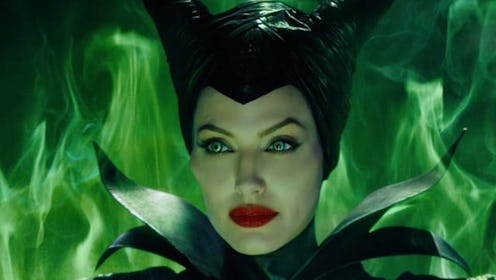Entertainment
'Maleficent' Shows That Women Are Heroes

Like Frozen before it, Disney continues to poke fun at the all too common “love at first sight” and “damsel in distress” tropes with their new movie Maleficent. Are we entering an era where it’s finally okay and totally not a big deal for women to be seen as heroes in Disney movies? It certainly seems like it — and that’s really exciting news.
Maleficent has received mixed reviews from critics, but I think you should still see it. The film’s far from perfect, but Angelina Jolie’s stunning performance as the titular “evil” fairy is worth the price of admission alone. Additionally, there are two very significant plot points in Maleficent that set it apart from so many other Disney films in a really refreshing way. Consequently, I think it’s important to support the movie.
Warning: Spoilers ahead.
In Frozen, Princess Elsa famously chastises her younger sister Anna for wanting to marry a man she’s only just met. It’s one of the film’s most surprising and hilarious moments. I mean, really? Disney, the studio responsible for films like Cinderella and Aladdin, wants to caution people against love at first sight? You bet! It was as if Disney had suddenly come to their senses, finally deciding to make fun of an unrealistic plot device that they had employed in so many of their movies for years. Happily, Maleficent continues right where Frozen left off.
In Sleeping Beauty, the 1959 Disney film that Maleficent sets out to turn on its head, Princess Aurora falls into a deep sleep due to a curse and can only be awoken by “true love’s kiss.” Naturally, Aurora receives this kiss from the dashing Prince Phillip, a man she’s only met once. How terribly convenient. Thankfully, in this new movie, things don’t work out quite the same way. In Maleficent, Aurora (Elle Fanning) does run into Prince Phillip (Brenton Thwaites) once in the forest, and some sparks do fly, but when it comes time to break Maleficent’s sleeping spell, Phillip’s kiss doesn’t do the trick. I guess it wasn’t really true love, after all.
Like in Frozen, the surprising moment is handled with humor, as Aurora’s fairy godmothers shoo Phillip from the room, telling him that he must not have “done it right.” The truth is: generally speaking, true love doesn’t develop in a mere matter of moments as it does in so many of Disney's past films. It’s so great to see Disney continuing to recognize that fact.
But the good news doesn’t stop there. In Frozen, it is the familial love between two sisters, not the romantic love between a man and a woman, that eventually “saves the day.” Similarly, in Maleficent, it is the love that Maleficent has developed for Aurora as her caregiver that is finally able to break the curse and wake her up. In both films, women are the heroes of the story. These women aren’t locked in a tower or imprisoned by an evil villain, waiting for a big, strong man to come along and sweep them off their feet, no. These women are overcoming obstacles and solving problems with their own strength, their own intelligence, and their own love. Imagine that! (I realize that in Maleficent, Maleficent functions as both a villain AND a hero. For me, it only adds to the film's appeal.)
Frozen and Maleficent may not be the first Disney films to feature female heroes (2012’s Brave certainly comes to mind), but because of Frozen’s massive popularity and Jolie’s impressive star power, I think that they’re the ones that could really begin to “break the mold” and shift our expectations of all children’s films going forward. Whether we like it or not, I believe that movies have the power to shape our perceptions of the real world. It’s so awesome that Disney has finally begun to tell more realistic, complex stories than “woman meets man, woman falls in love with man, woman gets in trouble, man saves the day.”
It’s about damn time.
Images: Disney